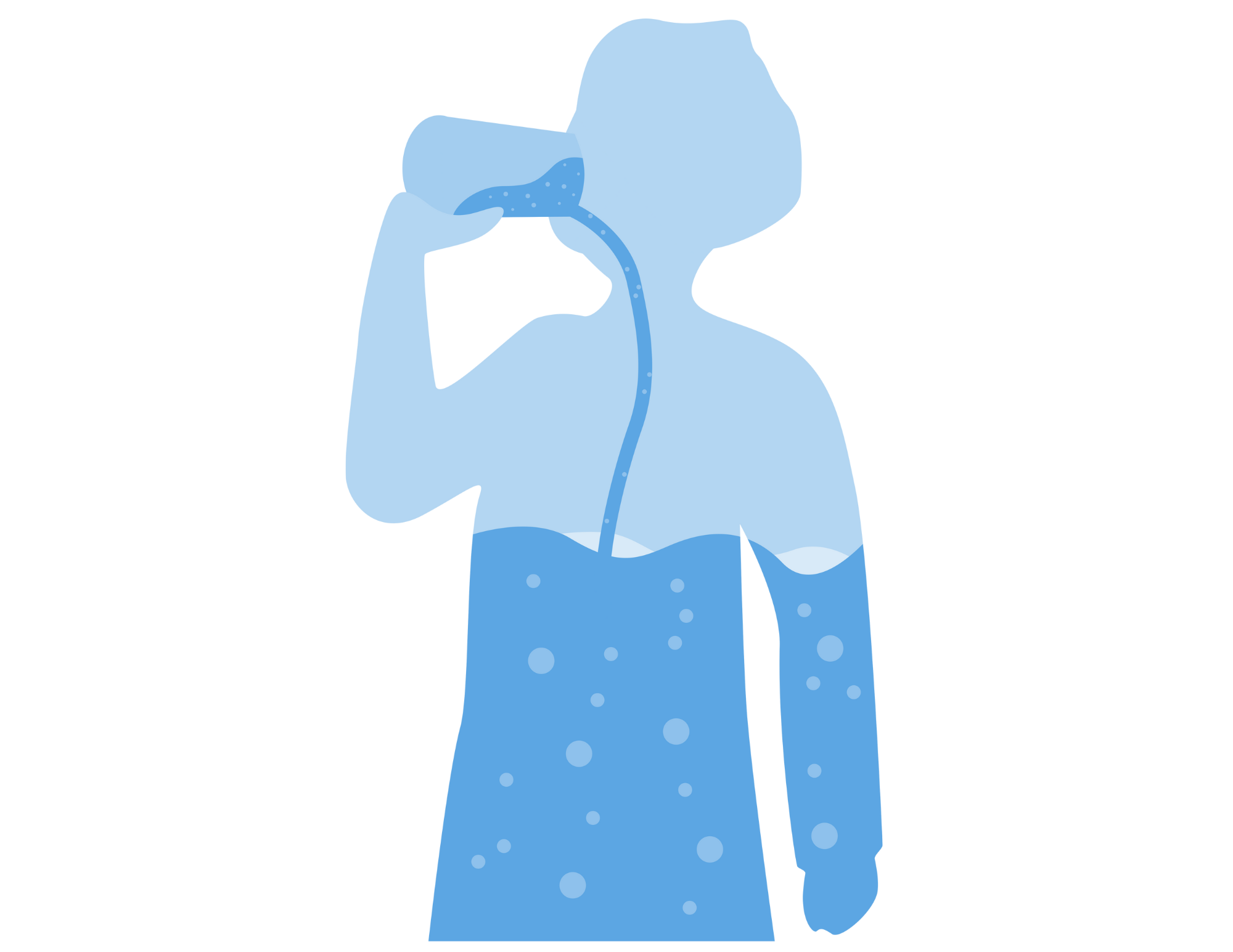
We all know about the importance of water–after all, it makes up most of our body. It helps our body regulate temperature, lubricate and cushion our joints and bones, protect our spinal cord, aid in digestion, get rid of waste through urine, sweat, and bowel movements, and more!
The dangers of dehydration
Dehydration is usually described as a deficit in total body water (TBW), the amount of water in the body. It can lead to a variety of adverse health outcomes, especially in older adults, those with multiple chronic conditions, and those taking multiple medications. For these populations, dehydration is associated with increased hospitalization and mortality. It can affect blood pressure, cause disorientation and headaches, lead to nausea and vomiting, and ultimately make dehydration even worse.
Causes of dehydration
Most problems occur due to low-intake dehydration, or inadequate water intake. Older adults in general tend to have a decrease in TBW. In long-term care settings, it is even more difficult to maintain sufficient hydration. Many long-term care clients either have decreased or no ability to complete their activities of daily living, such as eating and drinking or using the bathroom. Impaired memory due to normal aging or disease can make them forget to drink water on their own. These patients need additional help in order to stay hydrated.
Certain conditions also increase risk of dehydration. For example, older patients with poorly controlled diabetes are more likely to be dehydrated, as the sugar in their urine draws water out of the body. Urinary incontinence, or loss of bladder control, is another such condition, as well as diarrhea. Some signs to help recognize dehydration include reduced sweating in the armpit, reduced skin elasticity, dryness of the mouth, recent change in consciousness, and darker urine.
Increasing hydration
Since it is difficult to stop water from leaving the body, we should focus on increasing the amount of water coming in. Encourage your clients to drink water frequently, rather than drinking a large volume at once. Some simple but effective strategies include:
- Offering water/fluids throughout the day – e.g. every 1-2 hours
- Keeping water/fluids accessible and within reach
- Prompting clients to drink at routine events throughout the day and at meal times
- Encouraging a variety of hydrating or “wet” foods, such as yogurt, soup, and pureed fruit!
It is important to make sure all of your staff are on board and educated about these initiatives. Increasing staff awareness and understanding of dehydration will make it easier to maintain hydration strategies. Giving clients assistance with drinking will make it easier and more appealing to keep taking in fluids. Help using the toilet is also important, since drinking more water means that they will have to use the bathroom more often.
Finally, we recommend identifying clients that are at higher risk for dehydration and monitoring them regularly. Keeping a fluid intake chart would help your staff coordinate their efforts without miscommunication about responsibilities. We want to keep our clients hydrated and healthy at all times!
Find links below to our medication management course and to learn about fall risk, another issue that affects older adults.
Resources:
https://bremorx.com/pharmacy-courses/32-hour-medication-administration-training-course/
https://bremorx.com/medications-and-fall-risk/
https://www.cdc.gov/healthy-weight-growth/water-healthy-drinks/index.html
https://www.webmd.com/healthy-aging/what-to-know-about-dehydration-in-older-adults
https://www.ncbi.nlm.nih.gov/pmc/articles/PMC10255140/
https://www.mcgill.ca/familymed/files/familymed/effective_hydration_in_elderly.pdf
https://my.clevelandclinic.org/health/diseases/9013-dehydration


